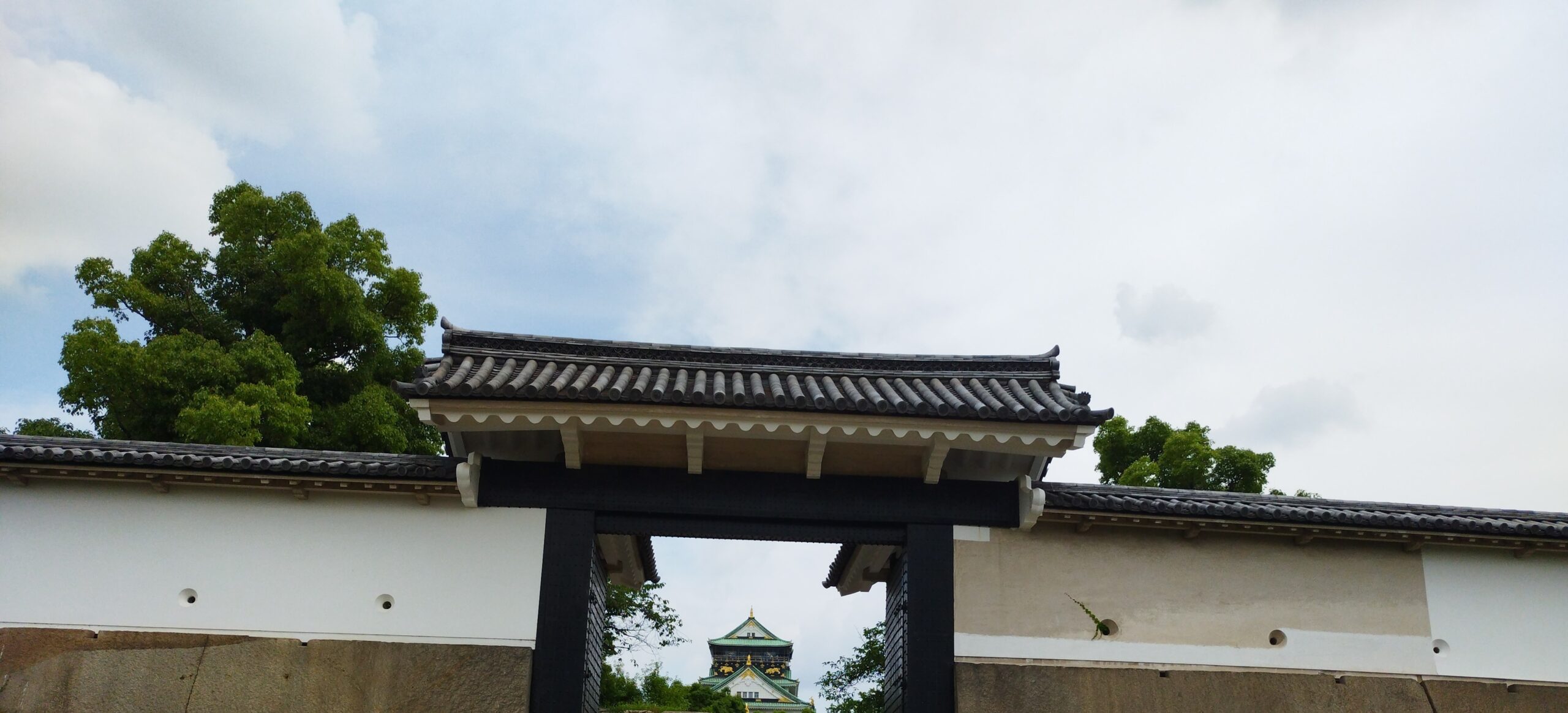本ブログは観光業、企業接待、留学生対応等で英語案内が必要ながら、多忙で準備に時間をかけられない方々の為にすぐに使える情報を分かりやすく解説しています。
今回は『日本の城』わかりやすく解説ブログの《4.城門>4.1 基本情報》のA級者用(日→英の対応が必要な方)向け演習《Dツール》です。
👉ショートカット&リンクについて!①最初に音声で学習されたい方はそのままお進み下さい。➁最初に原文を確認されたい方は【原文:日英】へ。③本編ブログを参照されたい方は『日本の城』わかりやすく解説へ。④音声ツールの概要を参照されたい方は『演習ツール』まで!
4. 城門
4.1 基本情報
本編ブログの基本情報は元々口頭向けではありませんので、ここでは案内説明にそのまま口頭でも使える英訳例と更にそれを簡略化したもの2種を追加しました。ツールとしては同じ日本語に対して(X)本編ブログ版(Y)口頭版(Z)簡略化版の3種となります。その為(Y)(Z)は厳密な日本語の対訳ではない点、ご注意下さい。現場では長めの日本語説明に対して、短時間に簡略化して英訳することはよくありますので、その演習と考えてください。
D1:日英確認用:『日本語』”英語”対訳
👉文単位で日本語の後に英訳が續きますので、内容の確認ができます。
ここでは、同じ日本語(15文)に対して、(X)本編ブログ版(Y)口頭版(Z)簡略化版の英訳3種のツールが各15文續きます。また、本編ブログの15英文は異なる3話者(各5文)に分かれていますが、ここではツール数を抑える為、1ファイルに合体しました。日本語は(X)(Y)(Z)とも全て同じ音声です。
D2:口頭即訳用:『日本語』のみ(ポーズ間に英訳)
👉各日本語文の後はポーズになっていますので、その間に英訳できます。
上述の通り、日本語は同じですので、それぞれのお好みで(X)本編ブログ版(Y)口頭版(Z)簡略化版の英訳を試すことができます。無音箇所(ポーズ)は、最長の(X)に合わせていますので、(Y)(Z)ベースで英訳する場合は、ゆったりしゃべることも可能です。
D3:リピーティング用:”英語”のみ(ポーズ無し)
👉英語音声のみが(ポーズなく)続きますので復唱ができます。
ここでは(X)本編ブログ版(Y)口頭版(Z)簡略化版の各英訳の確認が可能です。
D4:内容チェック用:”英語”のみ(低速版:or同通演習用)
👉英語音声(ポーズなし)を低速版で復唱or同時通訳の演習ができます。速さはいつも通り約120wpm(約85%低速版)です。
【原文:日英】
- 日本の城門には戦時の防衛だけでなく、高い建築技術で領主の力と財力を示す目的があります。
- (X:本編英訳)Japanese castle gates serve not only for wartime defense but also to demonstrate the power and wealth of the lord through advanced architectural techniques.
- (Y:口頭英訳)Japanese castle gates serve two purposes: wartime defense and showcasing the lord’s power and wealth with advanced architecture.
- (Z:簡易英訳)Japanese castle gates served both as wartime defenses and showcases of the lord’s power through their architecture.
- 敵が本丸まで簡単に侵入できないように複数の門が迷路の様に複雑に配置されています。
- (X:本編英訳)Multiple gates are intricately arranged like a maze to prevent easy access for enemies to the lord’s headquarters.
- (Y:口頭英訳)Multiple gates are intricately arranged. They form a maze-like barrier to deter enemies from accessing the lord’s headquarters easily.
- (Z:簡易英訳)Multiple gates were arranged like a maze to deter enemies from easily accessing the castle’s center.
- 城門自体には防御だけでなく攻撃を考慮した工夫がされています。
- (X:本編英訳)The castle gates themselves are designed not only for defense but also with consideration given to offensive tactics.
- (Y:口頭英訳)The castle gates themselves are designed with a focus on both defense and offensive tactics.
- (Z:簡易英訳)The gates themselves were designed not only for defense but also for offensive tactics.
- 元々はひとつの門だけであったが時代が進むと共に2つの門と石垣で囲む枡形門が定着しました。
- (X:本編英訳)Originally, a castle gate consisted of only one gate, but as time passed, it became common to construct a square area enclosed by two separate gates and stone walls.
- (Y:口頭英訳)Originally, castle gates consisted of just one gate.But over time, it became common to build a square area enclosed by two gates and stone walls.
- (Z:簡易英訳)From primitive simple gates, these box-style gates became mainstream over time.
- 侵入者をその枡形の中に閉じ込めて殲滅するよう作られました。
- (X:本編英訳)The castle gates were built with the intention of confining invaders within the square areas and completely destroying them.
- (Y:口頭英訳)The castle gates were built to trap invaders within the square areas and utterly destroy them.
- (Z:簡易英訳)This kind of box-style gate could trap invaders and utterly destroy them.
- 最初の外の門と次の奥の門は右側に直角に配置されています。
- (X:本編英訳)The first outer gate and the next inner gate are positioned at a right angle on the right side.
- (Y:口頭英訳)These two outer and inner gates are positioned at a right angle on the right side.
- (Z:簡易英訳)The two gates are positioned at a right angle on the right side,
- 敵は90度、向きを変えるためその勢いを止めなければなりませんでした。
- (X:本編英訳)The enemy had to change their direction by 90 degrees, which slowed down their momentum.
- (Y:口頭英訳)The enemy had to make a 90-degree turn, slowing their momentum.
- (Z:簡易英訳)forcing the enemy to make a 90-degree turn and slowing their momentum.
- 右側に配置された理由は日本人は右利きが多いので、敵の反撃をワンテンポ遅らせる為でした。
- (X:本編英訳)The reason for the right-side placement is that many Japanese people are right-handed, so it was intended to delay the enemy’s counterattack by one beat.
- (Y:口頭英訳)Due to many Japanese being right-handed, the intention of the right-side placement was to delay the enemy’s counterattack by one beat.
- (Z:簡易英訳)The right-side placement also enabled delaying the enemy’s counterattack, as most Japanese were right-handed.
- 2番目の門の上には櫓が乗っていて、その格子窓や石落としから、侵入者を攻撃することもできました。
- (X:本編英訳)On top of the second gate, there was a turret that could be used to attack invaders through its lattice windows or by dropping stones.
- (Y:口頭英訳)On top of the second gate was a turret with lattice windows and a way to drop stones on invaders.
- (Z:簡易英訳)On top of the second gate was a turret designed to attack or drop stones on invaders.
- 最初の外の門は、隙があればすぐ外にも攻撃できるように内開きになっています。
- (X:本編英訳)The first outer gate opens inward to enable immediate counterattacks if there are any vulnerabilities outside the gate.
- (Y:口頭英訳)The first outer gate opens inward, allowing immediate counterattacks against outside vulnerabilities.
- (Z:簡易英訳)The first gate opens inward, allowing for immediate counterattacks against outside vulnerabilities.
- 城門に装飾性を持たせるのは侵入者に財力を示すことで精神的に威圧する意図があります。
- (X:本編英訳)The decorative elements of the castle gates are intended to mentally intimidate intruders by showcasing the lord’s wealth.
- (Y:口頭英訳)The castle gates’ decorative elements mentally intimidate intruders, showcasing the lord’s wealth.
- (Z:簡易英訳)The gates’ decorations were meant to mentally intimidate intruders and showcase the lord’s wealth.
- 城門は役割で見ると正門(大手門)と裏門(搦手門)の二種類に分けられます。
- (X:本編英訳)When considering their roles, castle gates can be divided into two types: the main gate (‘ote-mon’ meaning ‘big hands’ ) and the back gate (‘karamete-mon’, meaning ‘squeeze hands’).
- (Y:口頭英訳)When considering their roles, castle gates can be divided into two kinds: main gates and back gates.
- (Z:簡易英訳)Castle gates can be divided into main gates and back gates.
- 正門は大きく堅固で防御力が高く、格式高く作られています。
- (X:本編英訳)The main gate is large, robust, and characterized by high defensive capabilities and grandeur.
- (Y:口頭英訳)The main gate is large, robust, and has a grand and defensive appearance.
- (Z:簡易英訳)The main gate is large, robust, and has a grand appearance.
- 裏門は一般的に正門に比べて質素ですが、中には正門の様に豪華な裏門もあります。
- (X:本編英訳)The back gate is generally more modest compared to the main gate, but there are also luxurious back gates similar to the main gate.
- (Y:口頭英訳)The back gate is usually simpler than the main gate, but some back gates are just as luxurious.
- (Z:簡易英訳)While the back gate is usually modest, although some back gates are just as luxurious.
- 湾曲した非対称の屋根を置くことで門の装飾性を高め、領主の財力を誇示しています。
- (X:本編英訳)The curved and asymmetrical roof design enhances the decorative nature of the gate and displays the lord’s wealth.
- (Y:口頭英訳)The curved and asymmetrical roof design enhances the gate’s decoration and shows the lord’s wealth.
- (Z:簡易英訳)The curved and asymmetrical roof enhances the gate’s beauty and demonstrates the lord’s wealth.
👉Glossaries(便利用語集)
日本語はちょっと厳しいかもしれませんが、日英とも最短(1単語)は1秒~長いものは2秒で置きました。
offensive tactics(攻撃) positioned at a right angle(直角に配置)momentum(勢い)any vulnerabilities(どんな隙でも)delay by one beat(ワンテンポ遅らせる)counterattack(反撃) lattice window(格子窓)invader、intruder(侵入者)open inward(うち開き) grandeur(格調高さ)modest(質素な) luxurious(贅沢な) asymmetrical(非対称の)
御礼🔶後書き
🔶今回も最後まで読んで頂き大変ありがとうございます。もし何かご意見やリクエストございましたらお気軽に『Help Desk』にてお声がけくださいませ。Gold🔶


